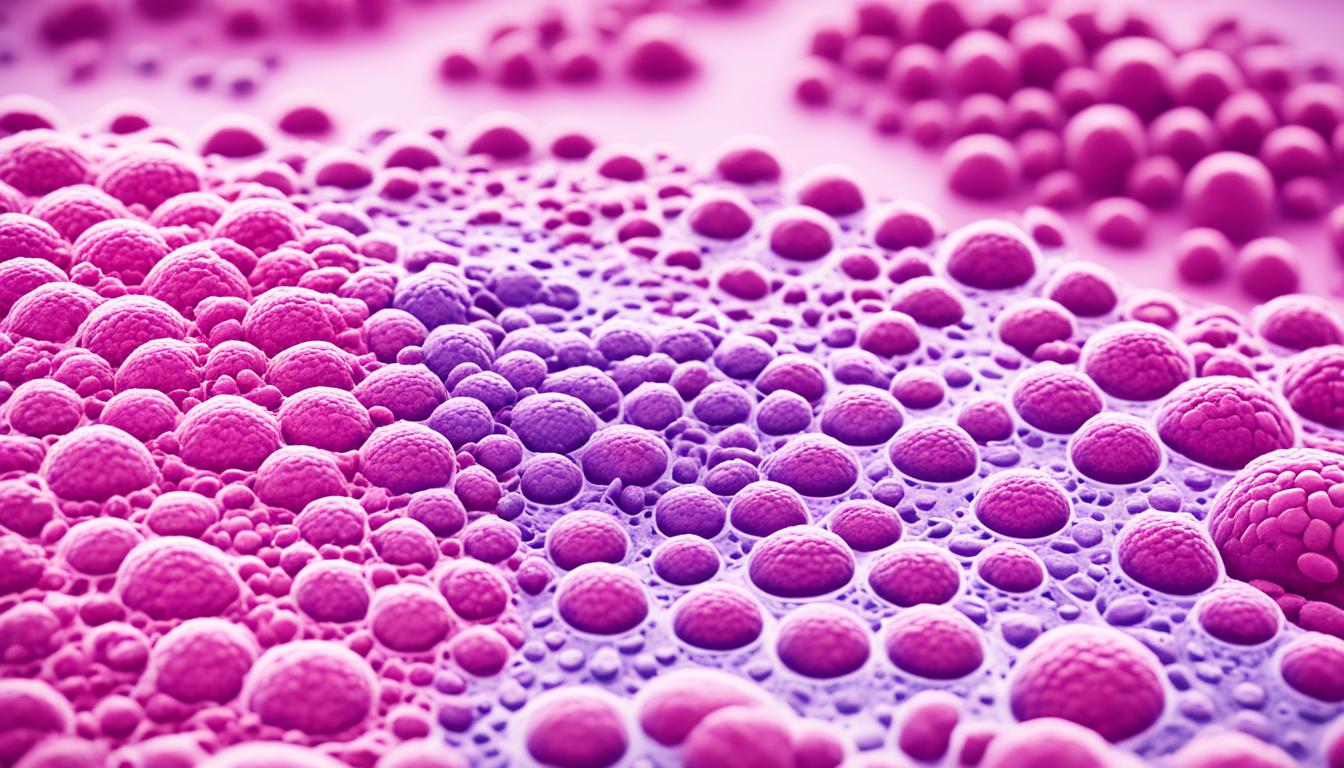Breast cysts are often found in women. They’re a key reason for seeing a breast specialist. These cysts are fluid-filled lumps that are usually harmless but can cause pain or other symptoms.
They happen due to changes in breast tissue. This can range from simple benign cysts to more complex issues. Sometimes, these changes can lead to cysts with a risk of breast cancer.
Simple cysts are not a worry, but other changes might need closer attention. These changes can include solid parts in the cysts. When cysts have certain types of cells, they might increase the risk of breast cancer. This whole process is likely affected by hormone levels.
Diagnosis of Suspicious Breast Lumps
Finding out if suspicious breast lumps are harmful is very important. Doctors use a triple assessment to check them out. This includes looking at the lump, doing tests, and checking a small sample under a microscope.
The doctor’s first step is talking with the patient and doing a physical exam. They look at the lump closely to learn more about it. Then, they might do an ultrasound or a mammogram to get a closer look.
Ultrasounds work well for young women with dense breast tissue. They can tell if a lump is filled with fluid or if it has solid parts. Mammograms, on the other hand, are better for women over 35. They can show more details about the lump.
Sometimes, the doctor might need more tests to be sure. They can do a fine-needle aspiration (FNA) or a core needle biopsy (CNB). An FNA is used for lumps that may be filled with fluid or have solid parts that look strange. If the lump doesn’t go away or if it still looks concerning, a CNB might be needed for a closer look and a more definite answer.
Treatment options for Suspicious Breast Lumps
Treating suspicious breast lumps is unique for each individual. The size, symptoms, and type of lump guide the best steps. These factors are crucial in deciding what to do.
Some lumps don’t show any symptoms and are harmless. In such cases, they might not need to be treated right away. Lumps that are painless can usually be left alone.
Yet, a lump that causes pain or worry can be dealt with. Doctors can remove its fluid using fine-needle aspiration. This method helps find out if the lump is harmful. If the fluid is bloody, more tests are done to check it’s not cancerous.
For lumps that come back or are complex, more steps may be needed. This might mean a core needle biopsy or a surgery to remove the lump for a better look. Doctors might also suggest taking medicines to stop new lumps from forming.

